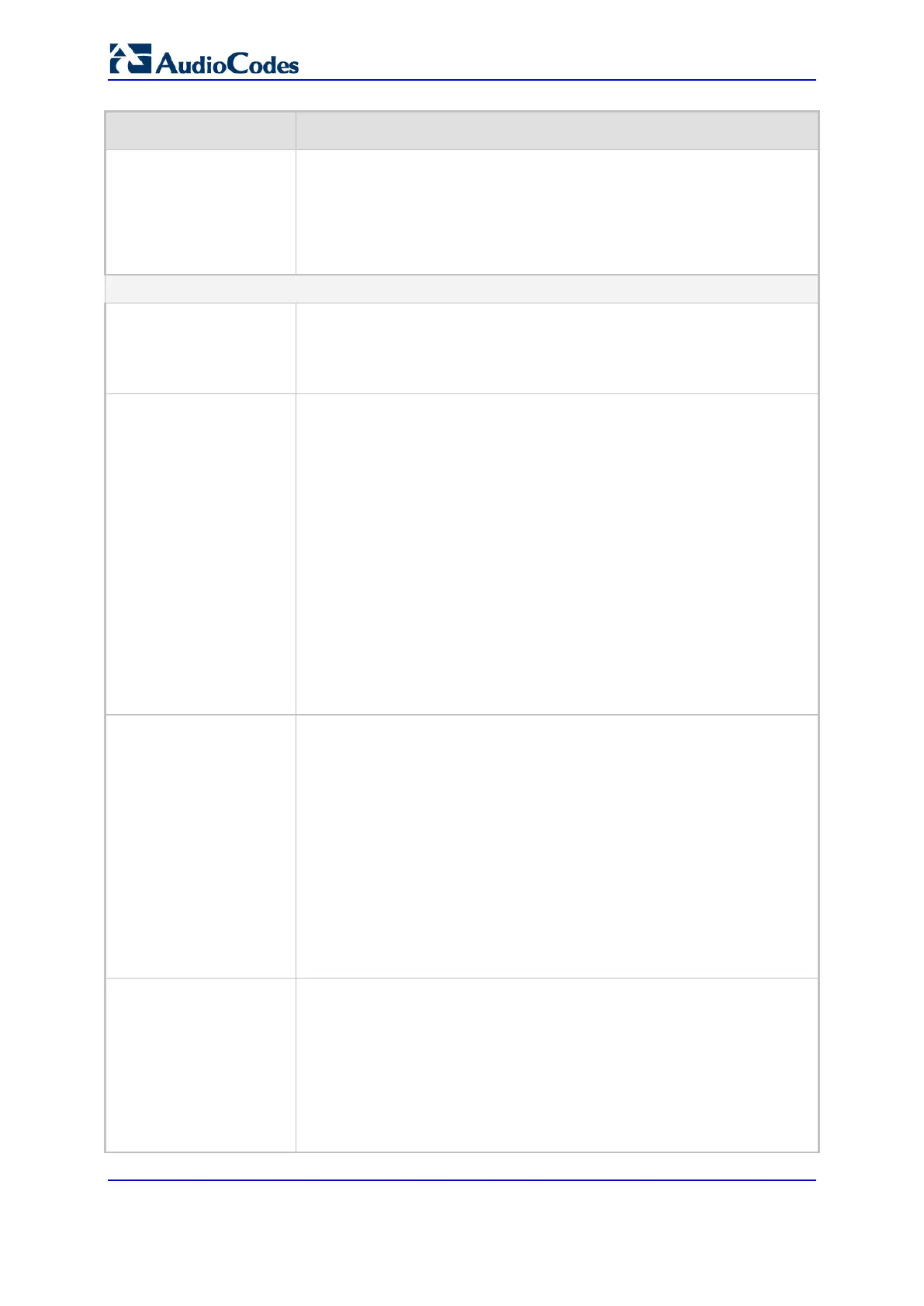User's Manual 376 Document #: LTRT-89730
Mediant 3000
Parameter Description
header.from.url.user== '100' (indicates that the user part of the From
header must have the value "100")
header.contact.param.expires > '3600'
header.to.url.host contains 'domain'
param.call.dst.user != '100'
Operation
Action Subject
[MessageManipulations_
ActionSubject]
Defines the SIP header upon which the manipulation is performed.
The valid value is a string (case-insensitive).
Action Type
[MessageManipulations_
ActionType]
Defines the type of manipulation.
[0] Add (default) = Adds new header/param/body (header or
parameter elements).
[1] Remove = Removes header/param/body (header or parameter
elements).
[2] Modify = Sets element to the new value (all element types).
[3] Add Prefix = Adds value at the beginning of the string (string
element only).
[4] Add Suffix = Adds value at the end of the string (string element
only).
[5] Remove Suffix = Removes value from the end of the string (string
element only).
[6] Remove Prefix = Removes value from the beginning of the string
(string element only).
[7] Normalize = Removes unknown SIP message elements before
forwarding the message.
Action Value
[MessageManipulations_
ActionValue]
Defines a value that you want to use in the manipulation.
The default value is a string (case-insensitive) in the following syntax:
string/<message-element>/<call-param> +
string/<message-element>/<call-param>
For example:
'itsp.com'
header.from.url.user
param.call.dst.user
param.call.dst.host + '.com'
param.call.src.user + '<' + header.from.url.user + '@' + header.p-
asserted-id.url.host + '>'
Note: Only single quotation marks must be used.
Row Role
[MessageManipulations_
RowRole]
Determines which message manipulation condition (configured by the
'Condition' parameter) to use for the rule.
[0] Use Current Condition = (Default) The condition configured in the
table row of the rule is used.
[1] Use Previous Condition = The condition configured in the first table
row above the rule that is configured to Use Current Condition is
used. For example, if Index 3 is configured to Use Current Condition
and Index 4 and 5 are configured to Use Previous Condition, Index 4
and 5 use the condition configured for Index 3. A configuration

